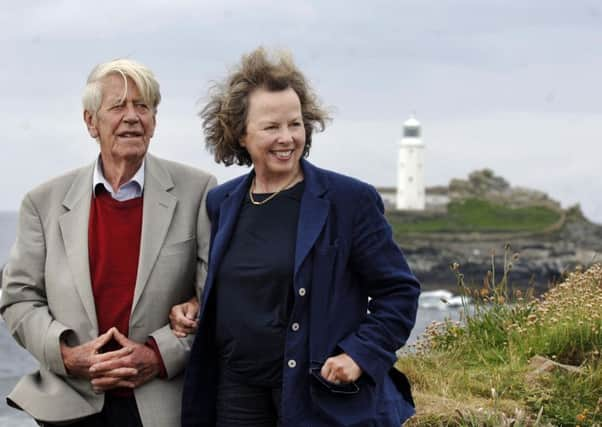Obituary: Professor Charles Thomas, CBE. Archaeologist


Professor Charles Thomas was a noted and much respected academic, field archaeologist, author and military historian. He published widely and wrote with great authority in learned magazines on his archaeological interests and personal research, including Mesolithic, Roman, early Christian and Bronze Age archaeology. He had a deep interest and knowledge of the history of Cornwall and the West Country but accumulated a passionate interest in the Pictish remains throughout Scotland while spending a decade lecturing at Edinburgh University in the late ‘50s and 60s.
Thomas had an intrinsic understanding of the formation of the countryside and could observe a landscape and interpret its history and the use it had been put to over the centuries. His finds, research and detailed archaeological discoveries were highly influential in determining our history and the living conditions and habits of our forebears.
Advertisement
Hide AdAdvertisement
Hide AdAnthony Charles Thomas was brought up in Camborne, his father was a solicitor and he gained an early love of history from his grandfather who was a keen amateur archaeologist in Cornwall. After attending Winchester College he joined the army in 1945 serving with the Royal Army Ordnance Corps in Scotland and Egypt. He admitted that his experience while in Egypt furthered his love of digging, “I used to pick up flint from places like Luxor and Aswan, which heightened my interest in archaeology.”
Thomas then read English law and jurisprudence at Corpus Christi College, Oxford from which he graduated in 1951. He studied prehistoric archaeology at the Institute of Archaeology concentrating much of his free time excavating the bronze-age farm at Gwithian in Cornwall. He was to return to Gwithian – especially working on its sand dunes - until 1963 doing valuable research into its history up until medieval times.
In 1957, he was appointed lecturer in archaeology at Edinburgh University where his distinguished academic career was recognised for his detailed and informed teaching. But Thomas was keen to broaden his students’ views and encouraged them to join him on his numerous excavations of Pictish remains – notably in the north east of Scotland. He worked closely with his Edinburgh colleague Professor Stuart Piggot but Thomas’s scholastic knowledge allowed him to interpret the Pictish stones – often totally confusing even to modern experts – with an informed authority. His conclusions, that the symbols depicted rank and kinship, has been challenged by other scholars but the clarity of his reasoning and comprehensive arguments are now the basis for all studies on the subject.
He also worked extensively in 1964/65 on the uninhabited Ardwall Island in Galloway. Thomas was, in fact, examining a hill fort near Gatehouse of Fleet and came across an 11th century cross-slab which had come from Ardwall some years before. He visited the island and was astonished at what he unearthed, “The site obviously presented considerable opportunity for research” he wrote. “A preliminary plan was made and published with a short account and this was eventually followed by two seasons of excavation”.
Those uncovered early Christian burials, an oratory or chapel and Thomas proposed there was sufficient evidence to suggest an early and influential Irish settlement which hitherto was unknown. “The results, Thomas concluded “go some way towards clarifying the course of early Christianity in this part of Scotland.”
Thomas was also involved in the research for Sally Foster’s precise book on the St Andrews Sarcophagus which has been described as ‘one of the most fascinating and beautiful monuments of pre-Romanesque art in Europe.”
He was appointed the first professor of archaeology at Leicester University in 1967 and during this time became a leading figure at the Council for British Archaeology. Thomas was a cofounder and enthusiastic supporter of the committee that protected ancient sites from being vandalised and canvassed that all developments be assessed for historic remains.
He completed his academic career back in his beloved Cornwall where he continued to carry out extensive and valuable field work and write.
Advertisement
Hide AdAdvertisement
Hide AdThomas remained a fastidious archaeologist to the end. In an interview he was asked what he thought of the popularity of such television programmes as Time Team. Quietly he replied, “Time Team is often very unrealistic. The representation of archaeology to the masses is, unfortunately quite often fantastical, and not very well researched.”
Thomas, who was made a CBE in 1991, was a delightful non-conformist. He strode over all the sites on which he was involved in shabby gear with boundless energy and enthusiasm invariably puffing eagerly on his pipe. He was hugely respected by generations of students at Edinburgh, Leicester and Cornwall and formulated his opinions with profound knowledge, vigour and a dash of learned humour.
While on an excavation in 1959 he met and married Jessica Mann. She and their children survive him.